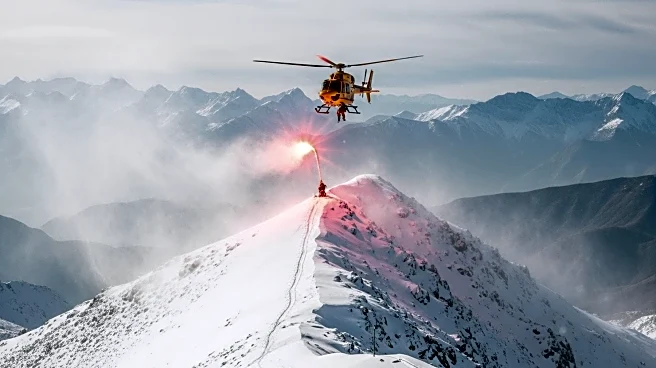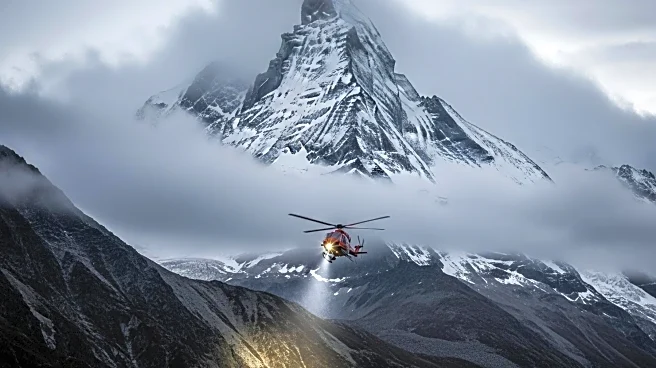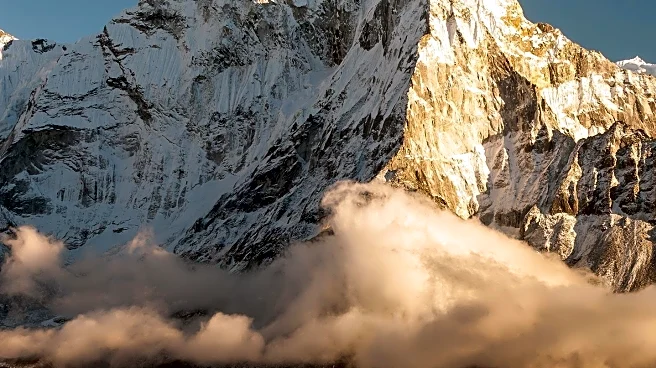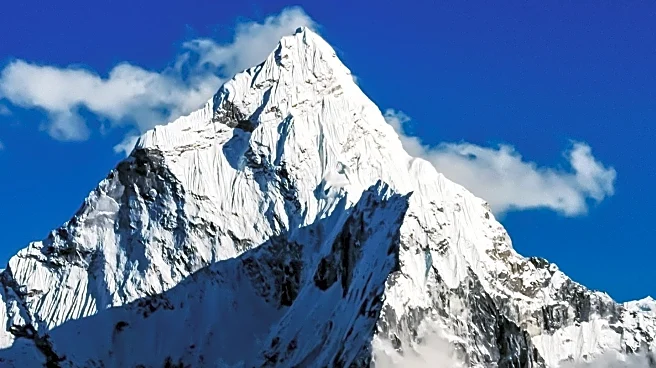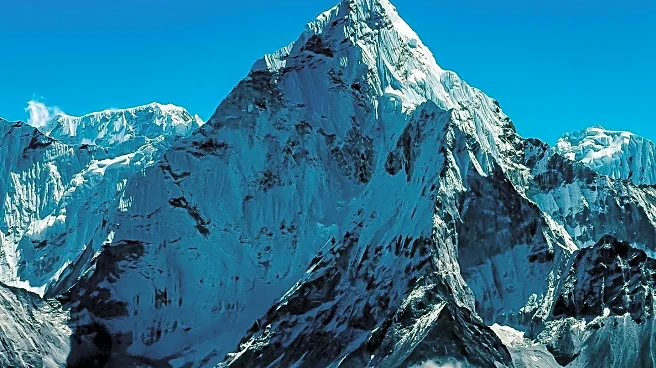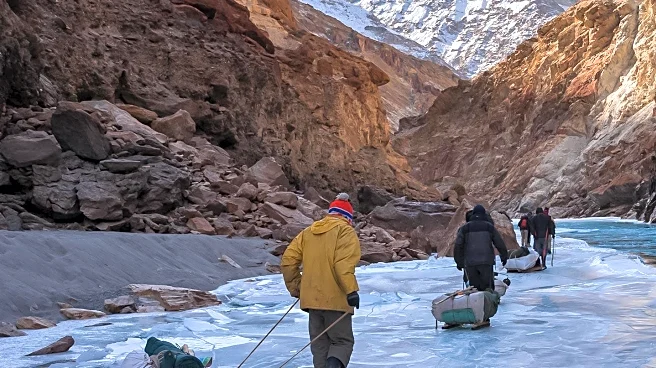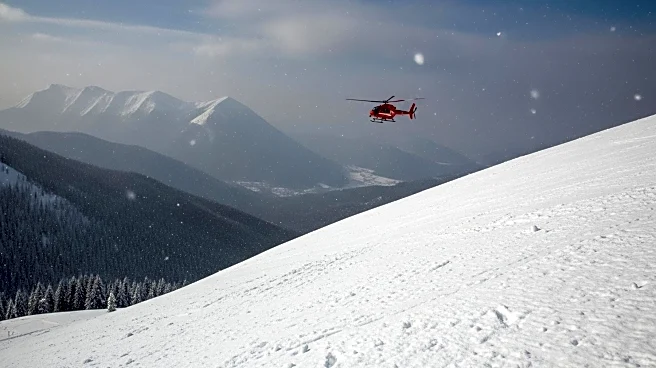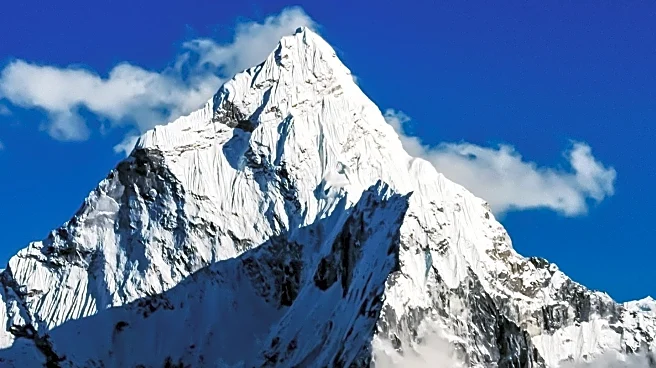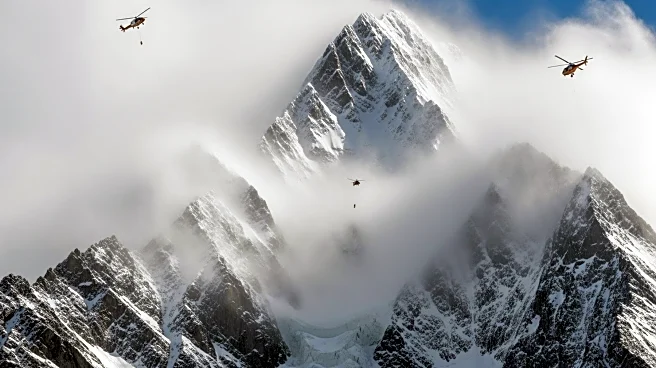What's Happening?
A severe snowstorm has trapped hundreds of hikers on Mount Everest's Tibetan side during China's national holiday. According to Chinese state media, approximately 350 hikers have reached a meeting point in Tingri County, while rescuers are in contact with another 200 individuals. The hikers were caught at an elevation of over 4,900 meters, with reports indicating snow depths of up to one meter, which has crushed tents and blocked paths. Rescue teams, including hundreds of personnel, have been dispatched to clear paths and assist the trapped hikers. The snowstorm coincided with a weeklong national holiday in China, a period when many people travel domestically and internationally.
Why It's Important?
The incident highlights the risks associated with high-altitude hiking, particularly during adverse weather conditions. The snowstorm's timing during a major holiday underscores the potential for increased casualties due to the higher number of tourists. The situation also draws attention to the challenges faced by rescue operations in remote and high-altitude areas, where unpredictable weather and difficult terrain can complicate efforts. The economic impact on local tourism, a significant source of income for the region, could be substantial if such incidents deter future visitors. Additionally, the event may prompt a review of safety protocols and emergency preparedness for tourists in high-risk areas.
What's Next?
Rescue operations are ongoing, with efforts focused on clearing paths and ensuring the safe descent of all trapped hikers. Authorities may conduct a thorough investigation into the incident to assess the adequacy of current safety measures and emergency response plans. The outcome could lead to enhanced safety regulations and improved infrastructure to better handle similar situations in the future. Stakeholders, including local governments and tourism operators, may collaborate to develop strategies to mitigate risks and ensure the safety of tourists in high-altitude regions.
Beyond the Headlines
The incident may also have broader implications for the perception of safety in adventure tourism, potentially influencing travel decisions and industry practices. It highlights the need for comprehensive risk assessments and the importance of equipping tourists with adequate information and resources to handle emergencies. The event could also spark discussions on the environmental impact of increased tourism in sensitive regions like Mount Everest, prompting calls for sustainable tourism practices.

